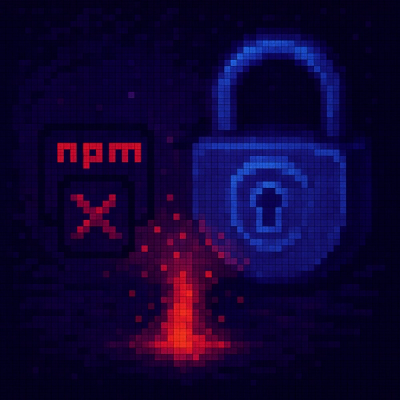GCP Push Metrics

This package helps you aggregate and push custom metrics to Google Cloud Monitoring from Node.js applications, for instance running using Google Cloud Run.
Using this package you can collect three types of metrics: counters, gauges and summaries. The values are aggregated in memory and every 60 seconds pushed to the Cloud Monitoring API.
Its API is heavily inspired by the excellent prom-client but the inner workings are very different. As it was initially written for a scenario where applications using Prometheus for metrics was being migrated to Cloud Monitoring out of necessity there will be some comparisons with prom-client throughout this document.
Installation
npm install @bonniernews/gcp-push-metrics
Usage
Let's start by looking at a basic use case, creating a counter and incrementing it.
import {pushClient, cloudRunResourceProvider} from "@bonniernews/gcp-push-metrics";
const client = pushClient({ resourceProvider: cloudRunResourceProvider });
const counter = client.counter({ name: "num_requests" });
counter.inc();
In the above example we import the package and create a client. In order to create a client we need to supply a resource provider. It's possible to create custom resource providers but here we use one supplied by the package.
We then proceed to create a counter named "num_requests" and increment it. Once 60 seconds has passed the client will try to push a single time series to the Cloud Monitoring API.
Note: Every time pushClient is invoked it will create a new instance which in turn will set up a setTimeout loop that will push metrics collected by the client. In most cases you should only create a single client within your application and expose it as a singleton.
Disabling locally
When running applications locally, for instance in a development environment, you may want to disable pushing metrics to the Cloud Monitoring API. This can be done by passing disabled: true to the client:
const client = pushClient({
resourceProvider: cloudRunResourceProvider,
disabled: process.env.NODE_ENV === "development"
});
Counters
Counters are implemented as the CUMULATIVE metric kind and the value reported will continously increase. Let's look at an example:
const counter = client.counter({ name: "num_requests" });
setTimeout(() => {
counter.inc();
counter.inc();
}, 61 * 1000);
setTimeout(() => {
counter.inc();
}, 121 * 1000);
After 60 seconds the client will push a time series with metric type "custom.googleapis.com/num_request" metric. The value will be 0.
After 120 seconds the client will again push a time series, this time with the value 2.
After 180 seconds the client will push the time series with 3 as value.
After 240 seconds the client will again push the time series with 3 as value.
Gauges
Gauges are point in time metrics that can both be increased and decresed. Example:
const gauge = client.gauge({ name: "requests_in_progress" });
setTimeout(() => {
gauge.inc();
gauge.inc();
}, 61 * 1000);
setTimeout(() => {
gauge.dec();
}, 121 * 1000);
After 60 seconds the client will push a time series with metric type "custom.googleapis.com/requests_in_progress" metric. The value will be 0.
After 120 seconds the client will again push a time series, this time with the value 2.
After 180 seconds the client will push the time series with 1 as value.
After 240 seconds the client will again push the time series with 1 as value.
Summaries
Summaries aggregate and calculate percentiles from observed values. The observed values are reset between each interval (60 seconds). Contrary to counters and gauges summary metrics will only be sent if there is at least one observation during the interval. Example:
const summary = client.summary({
name: "response_time",
percentiles: [0.5, 0.9]
});
setTimeout(() => {
summary.observe(10);
summary.observe(20);
summary.observe(30);
}, 61 * 1000);
After 60 seconds the client will not send any time series as there has been no observations.
After 120 seconds the client will push two time series. Both will have metric type "custom.googleapis.com/response_time" but they will differ in their labels. One will be labeled percentile: 50 and one percentile: 90. The first will have 20 as value and the latter will have 30 as value.
After 180 seconds the client will again not send any time series as there has been no observations in the passed interval.
Note: prom-client also pushes the number of observations and the sum of all observations. This library does not.
Default percentiles
If you don't specify percentiles when creating a summary it will default to [0.5, 0.9, 0.99]. Note that this is different from prom-client which defaults to [0.01, 0.05, 0.5, 0.9, 0.95, 0.99, 0.999].
Timers
As summaries are commonly used to measure execution or response times the summary object provides a convenience method for observing durations:
const summary = client.summary({
name: "response_time",
});
const end = summary.startTimer();
end();
Labels
All methods for changing the values of metrics (counter.inc, summary.observe etc) supports an optional labels object which can contain one or more labels and values. Let's look at an example:
const counter = client.counter({ name: "num_requests" });
setTimeout(() => {
counter.inc({ response_code: "2xx" });
counter.inc({ response_code: "2xx" });
counter.inc({ response_code: "3xx" });
}, 61 * 1000);
After 60 seconds the client will push a single time series with metric type "custom.googleapis.com/num_requests" and 0 as value.
Once 120 seconds has passed the client will push three time series. All three will have type "custom.googleapis.com/num_requests" but they will differ in labels. One will not have any labels at all. Another will have { response_code: "2xx" } as labels and 2 as value. The last one will have { response_code: "3xx" } as labels and 1 as value.
Default labels for counters and gauges
As we saw in the above example the client will push time series for created counters without labels as well as for incremented counters with labels. In other words, by default:
- Counters (and gauges) that are intended to be used only with labels are still pushed as time series without labels.
- When labels are used in the call to
inc the time series will only be pushed after inc has been called at least once.
This behavior can be changed by specifying labels when creating counters and gauges. In order to disable sending the un-labeled version of these metric types we can create them with an empty labels object, like this:
const counter = client.counter({ labels: {} });
We can also specify known label combinations up front, like this:
const counter = client.counter({
labels: {
response_code: ["2xx", "3xx", "4xx", "5xx"]
}
});
Let's look at a concrete example:
const counter = client.counter({
labels: {
response_code: ["2xx", "3xx", "4xx", "5xx"],
source: ["internal", "cdn"]
}
});
setTimeout(() => {
counter.inc({ response_code: "2xx", source: "internal" });
counter.inc({ response_code: "2xx", source: "internal" });
}, 61 * 1000);
setTimeout(() => {
counter.inc();
counter.inc({ response_code: "2xx", source: "unknown" });
}, 121 * 1000);
After 60 seconds the client will push a total of ten time series, all with 0 as values. Each time series will be labeled with one of the combinations among the labels we specified when creating the counter, for instance { response_code: "3xx", source: "cdn" }. Note that the client will not send a time series without labels.
After 120 the client will again push ten time series. The one labeled with { response_code: "2xx", source: "internal" } will now have 2 as value.
After 180 seconds the client will push twelve time series. Ten of them will be the same as before. The other two will be for the previously unseen label combinations, meaning one with { response_code: "2xx", source: "unknown" } as labels and one without labels.
Resource providers
When pushing metrics to Cloud Monitoring one must specify a resource type. This package handles that by allowing you to specify a "resource provider" when creating the client. A resource provider is a function which must return a promise which resolves to an object with two properties, default and exit. These properties must in turn contain valid resource objects. The exit one will be used when the client tries to push metrics when SIGTERM is sent to the application while the default one will be used for all other requests.
A minimalistic resource provider may look like this:
function globalResourceProvider() {
return {
exit: {
type: "global",
labels: {
project_id: "myproject",
},
},
default: {
type: "global",
labels: {
project_id: "myproject",
},
},
};
}
Note that the above example will only work when metrics are collected from a single source (ie one pod). In more realistic scenarios the resource should contain something that identifies the unique application instance to ensure that pushed time series won't conflict with each other.
Cloud Run resource provider
The package ships with a pre-built resource provider for applications deployed on Cloud Run, cloudRunResourceProvider. This resource provider will use the generic_node resource type. It maps the labels for the resource in the following way:
Maximum 200 time series
The Cloud Monitoring API currently supports a maximum of 200 time series in a single API call. This means that currently this package will only work with 200 or less time series. In the future we may implement functionality to split a greater number of time series into multiple requests.
Development/packaging
As the package is built using ES6 modules we also need to ship a CommonJS dist. This is done in the form of index.cjs which is generated using npm run dist. This command should always be run prior to npm publish.
Credit
The functionality for calculating percentiles was copied and modified from node-stats-lite.



